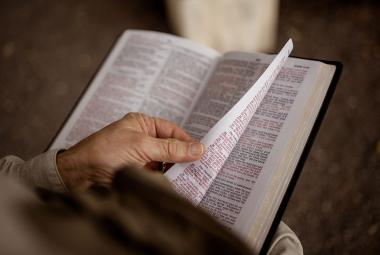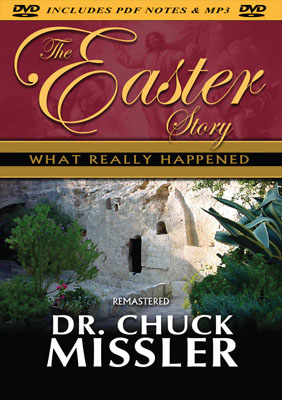Most reasonably informed Christians are well aware that many of the traditions that surround Christmas have pagan origins and little correlation with the actual events recorded in the Bible.
Most of us are surprised when we discover that some of what we have been taught about “Easter” is not only in error, but deliberately so! Many, of course, are aware that the name “Easter” actually originates with the pagan worship of Ishtar (or Astarte) that was traditionally observed at the time of the vernal equinox, nominally about March 21 or 22. Traditional pagan fertility symbols of both rabbits and eggs continue to be associated with this holiday.
However, the name as commonly used is also currently associated with the events surrounding the Crucifixion and Resurrection of Jesus Christ, which actually occurred on the Jewish Passover and is clearly defined in the Scriptures as the 14th of Nisan.
The Quartodeciman Controversy
It may come as a shock to learn that the early church deliberately committed to separating itself from the explicit record of Scripture. The practice of those Christians insisting on celebrating Passover on the fourteenth day of Nisan from the Old Testament calendar1 was known as Quartodecimanism (“fourteenism,” as derived from Latin). It is nothing short of astonishing to discover that not only was this a major emotional controversy within the early church,2 but that the commitment to deviate from the Scriptures was driven by a deep anti-Semitism!
The controversy surrounding this issue was a principal topic at the Council of Nicea in 325 A.D. Emperor Constantine presided over this council—note his own words:
It was, in the first place, declared improper to follow the custom of the Jews in the celebration of this holy festival, because their hands having been stained with crime, the minds of these wretched men are necessarily blinded ... Let us, then, have nothing in common with the Jews, who are our adversaries ... avoiding all contact with that evil way ... who, after having compassed the death of the Lord, being out of their minds, are guided not by sound reason, but by an unrestrained passion, wherever their innate madness carries them ... a people so utterly depraved ... Therefore, this irregularity must be corrected, in order that we may no more have any thing in common with those parricides and the murderers of our Lord ... no single point in common with the perjury of the Jews.3
The early church father Eusebius also records Emperor Constantine as writing:
... it appeared an unworthy thing that in the celebration of this most holy feast we should follow the practice of the Jews, who have impiously defiled their hands with enormous sin, and are, therefore, deservedly afflicted with blindness of soul ... Let us then have nothing in common with the detestable Jewish crowd; for we have received from our Saviour a different way.4
Setting a Date for Easter
The council unanimously ruled that the Easter festival should be celebrated throughout the Christian world on the first Sunday after the full moon following the vernal equinox; and that if the full moon should occur on a Sunday, and thereby coincide with the Passover festival, Easter should be commemorated on the following Sunday. As a result of the Council of Nicea, and amended by numerous subsequent meetings, the formal church deliberately attempted to design a formula for “Easter” which would avoid any possibility of it falling on the Jewish Passover, even accidentally!
A principal astronomical problem involved was the discrepancy between the solar year and the lunar year, and thus, the Julian calendar then in use. Numerous alternatives for fixing the date of the feast were tried by the church but proved unsatisfactory, so Easter was celebrated on different dates in different parts of the world. In 387, for example, the dates of Easter in France and Egypt were 35 days apart.
By about 465, the church adopted a system of calculation proposed by the astronomer Victorinus, who had been commissioned by Pope Hilarius to reform the calendar and fix the date of Easter. Elements of his method are still in use, although the Scythian monk Dionysius Exiguus made significant adjustments to the Easter cycle in the 6th century. Refusal of the British and Celtic Christian churches to adopt the proposed changes led to a bitter dispute between them and Rome in the 7th century. Reform of the Julian calendar in 1582 by Pope Gregory XIII, through adoption of the Gregorian calendar, eliminated some of the difficulties in fixing the date of Easter and in arranging the ecclesiastical year. Since 1752, when the Gregorian calendar was also adopted in Great Britain and Ireland, Easter has been celebrated on the same day in the Western part of the Christian world.
The Eastern churches, however, which did not adopt the Gregorian calendar, commemorate Easter on a Sunday either preceding or following the date observed in the West. Occasionally the dates coincide; the most recent times were in 1865 and 1963.
In 1928 the British Parliament enacted a measure allowing the Church of England to commemorate Easter on the first Sunday after the second Saturday in April. Despite these steps toward a consolidation, Easter continues to be a “movable” feast. In the church’s zeal to separate itself from the Biblical text, confusion has continued. [This article was excerpted from Chuck’s briefing, The Easter Story: What Really Happened.]
Notes:
1. Defined in Leviticus 23:5 to be a perpetual ordinance (cf. Ex 12:14).
2. Based on the writings of Irenaeus, the Roman church had celebrated Passover on a Sunday at least since the time of Bishop Xystus or Sixtus I, 115-125 A.D. (Eusebius H.E. 5.24.14). The aged Apostolic Father Polycarp visited Rome circa 154 A.D., at which time he discussed the difference in Paschal’s calculation with Bishop Anicetus and reached an amicable compromise. In addition, Polycrates of Ephesus and Irenaeus wrote in support of the Quartodecimans. (Eusebius H.E. 5.24.17).
3. The Epistle of the Emperor Constantine, Theodoret’s Ecclesiastical History, 1.9.
4. Eusebius, Life of Constantine, Book 3, chapter 18.







